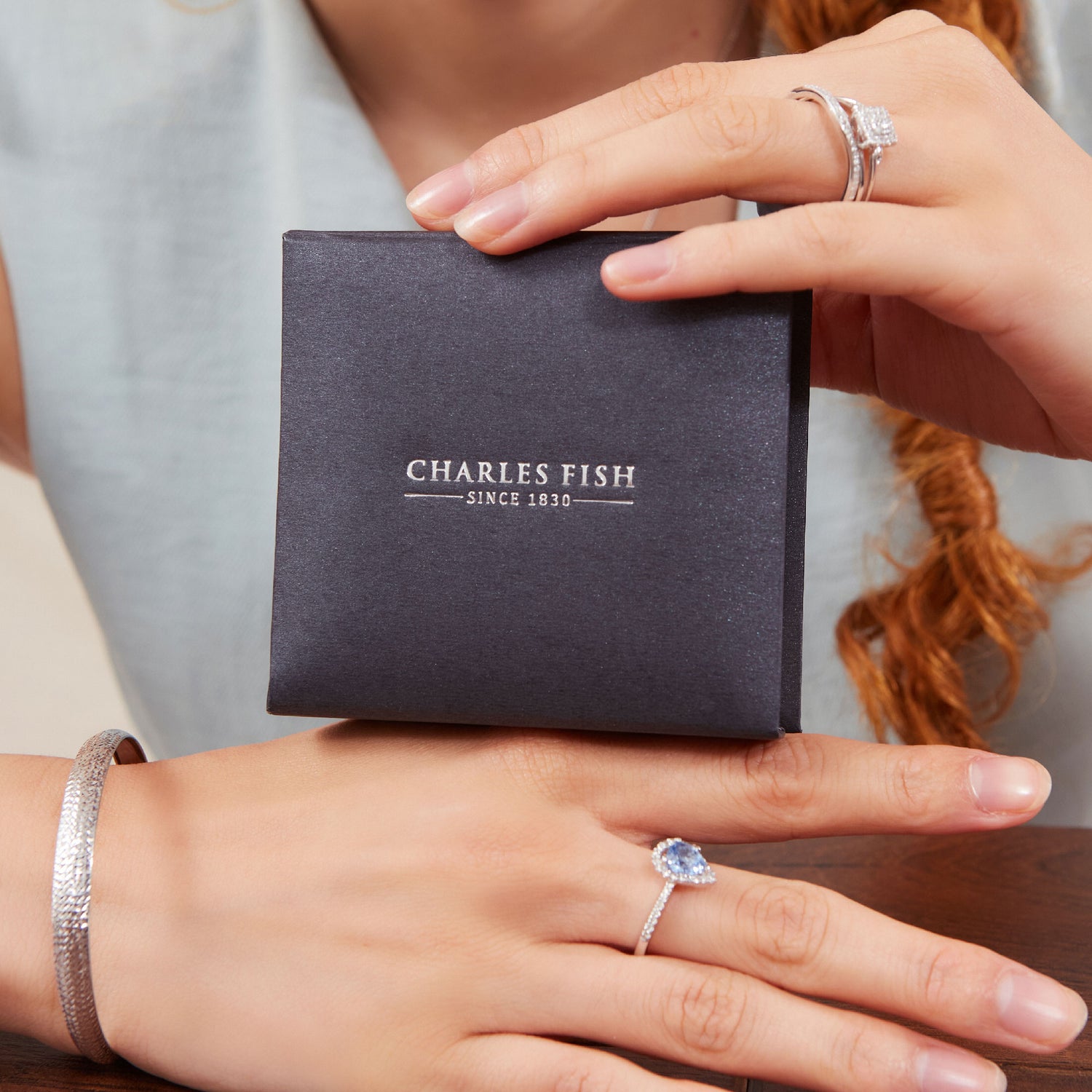Let’s talk about the unsung heroes of the jewellery world – hallmarks! These little stamps may seem insignificant, but they pack a punch in ensuring the authenticity and purity of precious metals like gold, silver, platinum, and palladium. If you’re diving into buying or selling jewellery, understanding hallmarks is essential for both sellers and savvy shoppers alike.
What are hallmarks and why do they matter?
In the UK, selling or describing any item as gold, silver, platinum, or palladium is illegal unless it’s hallmarked. Here at Charles Fish, because we have no intention of ending up on the wrong side of the law, we make sure every piece of jewellery we sell is hallmarked.
You might have spotted hallmarks on your jewellery before and wondered what they mean. So, what’s the scoop on these markings? Let’s break it down!
There are five key types of hallmarks you’ll find on jewellery:
-
Purity or fineness mark: This little gem tells you the percentage of pure metal in the item. For instance, if you see “750” on a gold piece, it’s 18-carat gold, meaning it’s 75% pure gold. In the case of silver, a “925” mark indicates sterling silver, which is 92.5% pure.

-
Assay office mark: Each hallmark often includes a symbol from the assay office (the testing facility) that certified the item. In the UK, we have 4 official assay offices: London (lion’s head), Birmingham (anchor), Sheffield (rose), and Edinburgh (castle).

- Maker’s mark: This is a unique symbol or set of initials from the maker or manufacturer. It’s like a signature, identifying who crafted or designed the piece.
- Sponsor’s mark: This shows the initials of the company or individual who submitted the jewellery for testing at the assay office. At Charles Fish, we send any jewellery we receive without a hallmark to the Birmingham assay office for testing. They’ll stamp it with the purity mark, their anchor symbol (assay office mark), and FBS for Fish Brothers (sponsor’s mark).
-
Date Mark (optional): Some hallmarks feature a letter or code indicating the year the piece was marked. This can be helpful if you’re eyeing a vintage or antique treasure!
Symbols of British hallmarks

British hallmarks are a fascinating part of jewellery history, and they help ensure the quality and authenticity of precious metals.For a visual guide on what some of these hallmarks look like, take a look at the Goldsmiths’ Company guide to hallmarks.
Why are hallmarks important?
Hallmarks serve as a guarantee that you’re getting exactly what you pay for, especially when you’re buying sustainable gold or pre-loved jewellery. They confirm the precious metal content, the maker, and even the authenticity of vintage or antique pieces, adding both value and trust to your purchase. Plus, in many countries (including the UK), hallmarks are required by law for all precious metals sold, protecting you from counterfeit or misrepresented pieces.
Hallmarks are especially significant for eco-conscious shoppers hoping to buy sustainable gold and pre-loved jewellery. They indicate quality without the environmental impact of new production. So, when you buy from us, you can relax knowing you’re investing in a high-quality gold piece, not some flimsy fake that might turn your skin green!
The bottom line
So, how can you be sure you’re buying real gold? Just check for those all-important hallmarks! Or better yet, shop with confidence at a trustworthy business like Charles Fish, where we’re committed to providing you with authentic, hallmarked jewellery you can cherish for years to come.













